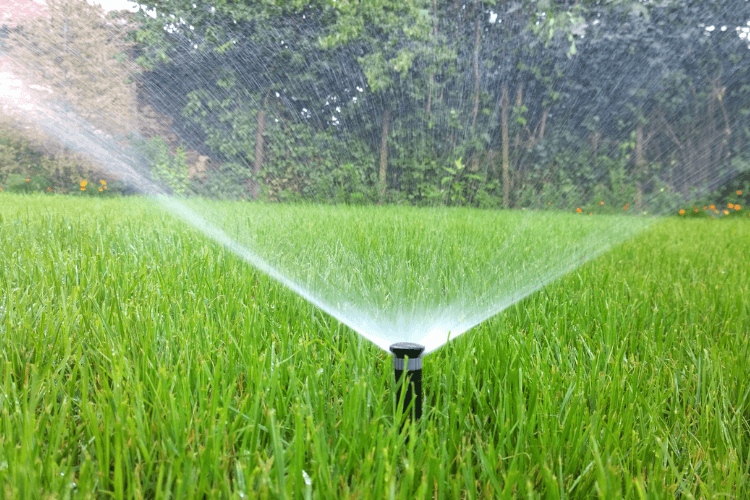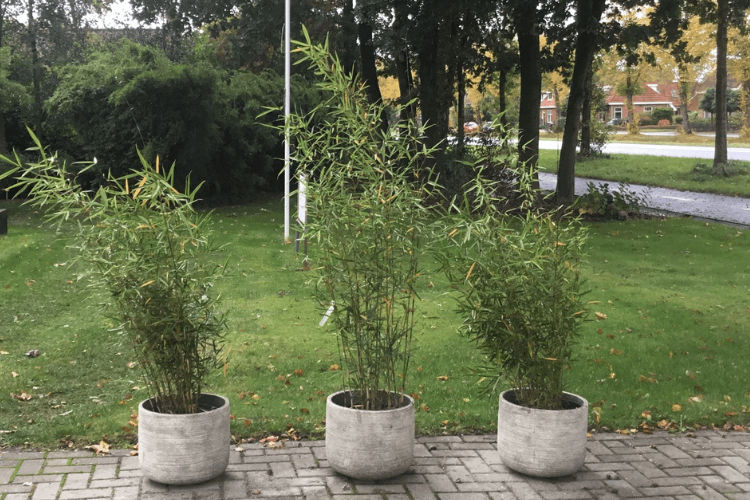If you’ve ever walked into your backyard only to find patches of bare soil where grass refuses to grow, you’re not alone. Shaded areas in your garden can pose a challenge for grass growth, leaving you frustrated with sparse lawns. But the solution lies in choosing the grass that grows in shade—grasses that can thrive without the full sunlight that most lawns demand. In this guide, we’ll walk you through the best grasses to plant in shaded spots and share practical tips for care and maintenance.
Table of Contents
Why Choose Grass That Grows in Shade?
Shady areas in your garden can be tricky to handle. Without the intense sun exposure, typical grass varieties often struggle to grow. However, by selecting the right grass that grows in shade, you can transform those tricky corners into lush, green spaces. Here are a few reasons why you should choose shade-tolerant grasses:
- Lush Aesthetic: A vibrant, green space in the shade adds beauty to your garden.
- Minimized Maintenance: These grasses are low-maintenance and more adaptable to diverse environments.
- Prevention of Soil Erosion: Shady areas can often become eroded or compacted; grasses help hold the soil together.
- Enhanced Garden Design: These grasses can be used in various landscaping designs to create texture and visual interest in shaded spots.
Choosing the best grass that grows in shade ensures that every part of your garden looks vibrant, whether it’s a sun-drenched or shady corner.
Factors to Consider When Selecting Grasses for Shade
Before rushing to plant, it’s important to understand what factors determine whether a grass that grows in shade will thrive. Here are key elements to consider:
1. Light Requirements
While no grass will thrive in total darkness, some varieties are better equipped to handle partial or full shade. Understanding the light levels of your shaded area will help guide your selection.
2. Soil Quality
Grasses prefer certain types of soil. Some require well-drained, fertile soil, while others can tolerate poorer soils. Testing your soil before planting will give you valuable insights into what grass varieties will perform best.
3. Watering Needs
Grasses that grow in shade generally need consistent moisture but don’t like being waterlogged. Choose a variety that aligns with the watering routine your garden can support.
4. Climate Conditions
Different grasses thrive in different climates. Some are cold-tolerant, while others prefer warmer climates. Consider the regional climate and choose grasses that are suited for it.
5. Maintenance Requirements
Some ornamental grasses for shade require little care once established, while others may need regular mowing or trimming to maintain their shape. Select a variety that matches your desired level of effort.
Top 10 Grasses That Grow in Shade
If you’re ready to introduce the perfect grass that grows in shade into your garden, here are the top 10 options to consider. These grasses not only tolerate low light but also add beauty and function to shaded corners.
1. Creeping Red Fescue

Creeping Red Fescue is one of the most reliable ornamental grasses for shade. Its fine texture and ability to spread make it an excellent ground cover for shaded lawns.
- Light: Partial to full shade
- Watering: Moderate
- Maintenance: Low
This grass is a standout for its dense mat-like growth, which helps to choke out weeds, making it ideal for low-light spaces where regular lawn grasses fail.
2. Japanese Forest Grass (Hakonechloa)

If you’re looking for a decorative grass with a bit of flair, Japanese Forest Grass is perfect. It’s known for its striking arching form and soft texture, making it an ideal ornamental grass for landscaping.
- Light: Partial to full shade
- Watering: Moist, well-drained soil
- Maintenance: Low
With its golden-green foliage, this grass adds a unique visual appeal to any garden design.
3. Tufted Hairgrass (Deschampsia)

Tufted Hairgrass is an excellent choice for those looking for a grass with the fuzzy thing on top. Its airy seed heads create a whimsical, natural look in shaded areas.
- Light: Partial shade
- Watering: Moist to average
- Maintenance: Low
This perennial ornamental grass will not only thrive in shade but will also bring movement to your garden when the wind blows.
4. Lilyturf (Liriope)

Lilyturf, or Liriope, is a hardy ornamental grass plant that thrives in a variety of growing conditions. Known for its deep green foliage and purple flower spikes, it’s perfect for adding texture to shaded borders.
- Light: Full to partial shade
- Watering: Average moisture
- Maintenance: Low
Liriope works well as a thick grass hedge, providing ground coverage in shady spots.
5. Northern Sea Oats (Chasmanthium latifolium)

With its unique flat seed heads, Northern Sea Oats stand out in the world of perennial grasses. This shade-loving grass brings texture and movement to your garden.
- Light: Partial shade to full shade
- Watering: Moderate moisture
- Maintenance: Low
It’s a fantastic ornamental grass for shade and can also work in a rain garden.
6. Pennsylvania Sedge (Carex pensylvanica)

Pennsylvania Sedge is an outstanding perennial ornamental grass for shade. Its soft, fine-textured leaves and low-growing nature make it ideal for shady woodland areas or as a ground cover.
- Light: Full to partial shade
- Watering: Moist, well-drained soil
- Maintenance: Low
This grass is ideal for those looking to mimic the look of a natural woodland setting.
7. Blue Sedge (Carex flacca)

Blue Sedge is a vibrant ornamental grass that thrives in shaded areas. It’s especially known for its striking blue-green foliage that contrasts beautifully with other plants.
- Light: Full to partial shade
- Watering: Moist, well-drained soil
- Maintenance: Low
It’s an attractive choice for those seeking grasses for landscaping.
8. Silver Grass (Miscanthus sinensis)

While Silver Grass can grow in sunny spots, it also thrives in partial shade. It’s best known for its beautiful feathery plumes that sway gently in the wind.
- Light: Partial shade
- Watering: Moist
- Maintenance: Moderate
Perfect for adding height and drama to shaded spaces, this tall ornamental grass makes a bold statement in your landscape.
9. Fountain Grass (Pennisetum setaceum)

Fountain Grass is a tall decorative grass that works well in full or partial shade. Its graceful, arching form and soft pinkish plumes create a dynamic contrast in the garden.
- Light: Partial shade
- Watering: Moderate
- Maintenance: Moderate
This grass provides a soft texture to any shaded garden design.
10. Bamboo (Fargesia spp.)

While not technically a grass, Bamboo has a similar growth habit and can thrive in shaded areas, making it an excellent option for creating privacy.
- Light: Partial to full shade
- Watering: Moderate
- Maintenance: Moderate
Use Bamboo to create a tall grass hedge in shady spots where you want a bit more privacy.
Landscaping Ideas with Shade-Tolerant Grasses
Once you’ve selected your grass that grows in shade, it’s time to think about how to integrate it into your landscape design. Here are some landscaping ideas to consider:
- Create Borders: Use ornamental grasses for shade as borders around shaded garden beds. These grasses will help define the edges of your garden.
- Fill in Gaps: Shady patches often leave gaps in your garden design. Plant perennial grasses like Creeping Red Fescue to fill in those areas with texture.
- Privacy Screens: Use tall grasses for privacy in shaded areas. Grasses like Bamboo or Northern Sea Oats are excellent for creating natural screens.
- Low-Maintenance Ground Covers: Plant low-growing grasses like Pennsylvania Sedge in shaded areas to reduce the need for mulch and create an eco-friendly ground cover.
Care and Maintenance Tips for Grass That Grows in Shade
Caring for grass that grows in shade is not as challenging as it may seem. With the right attention, these grasses can thrive and remain healthy in low-light conditions.
1. Watering Needs
Most shade-tolerant grasses prefer consistent moisture, but they don’t want to be waterlogged. Aim to water deeply but infrequently to encourage strong root systems.
2. Fertilizing
Light fertilizing is usually sufficient. Use a balanced fertilizer in early spring to help your grass grow strong.
3. Mowing
Some ornamental grasses for shade may require occasional trimming to maintain their shape. Be sure to cut back dead leaves in late winter or early spring.
4. Dealing with Pests
Pests like aphids may occasionally infest grasses, so keep an eye out and treat infestations early with organic methods or insecticidal soap.
Frequently Asked Questions (FAQs)
Q1: What is the best grass for shade that requires little maintenance?
A1: Creeping Red Fescue is one of the best grass for shade and requires minimal maintenance once established.
Q2: Can I use ornamental grasses for landscaping in shaded areas?
A2: Yes, many ornamental grasses for shade are perfect for landscaping in shaded areas and can add texture, color, and structure to your design.
Q3: Are there any dwarf ornamental grasses that grow well in the shade?
A3: Yes! Dwarf ornamental grasses, like Blue Sedge, are perfect for small shaded areas.
Conclusion
Now that you know the best grass that grows in shade, you’re ready to transform your shaded garden into a vibrant, lush space. Whether you’re looking for ground cover, a privacy screen, or simply adding texture to your garden design, shade-tolerant grasses can help you achieve your goals. Start with one of the grasses we’ve mentioned, and watch your shaded areas flourish into a garden you’ll love. Happy gardening! 🌿
By following the guidance above, your garden can flourish with vibrant, low-maintenance grasses that will stand the test of time, even in the shade!

